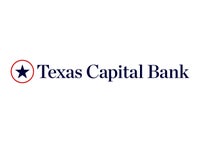UFB Direct

Updated July 22, 2024
A savings account can be a great place to set aside money that you’re saving and want to earn a competitive APY on, even if you aren’t sure on the time horizon for the money. Bankrate’s top savings rates are much higher than the current national average savings yield of 0.61 percent.
Bankrate provides you with timely news and rate information on the top savings yields from some of the most popular and largest FDIC banks and NCUA credit unions. This way you don’t have to spend time searching many bank and credit union websites. Since 1976, Bankrate has been a trusted source of banking information to help you make well-informed decisions on your finances.
If you are looking for a low-risk way to save money over a long period of time, high yield savings accounts may be a good option for you. Banks that offer online savings accounts tend to have higher rates for a better return on your deposited funds, as long as you can follow any minimum balance and monthly fee rules. Keep in mind that savings rates are subject to change over time.
Note: Annual percentage yields (APYs) shown were updated between July 19 and July 25. All other information is current as of July 22. Bankrate's editorial team validates this information regularly, typically biweekly. APYs may have changed since they were last updated and may vary by region for some products. Bankrate includes only FDIC banks or NCUA credit unions in its listings.
Page preview:
The following accounts can be found at most banks and credit unions. They’re federally insured for up to $250,000 and offer a safe place to put your money while earning interest.
CDs are best for individuals looking for a guaranteed rate of return that’s typically higher than a savings account. In exchange for a higher rate, funds are tied up for a set period of time and early withdrawal penalties may apply.
Checking accounts are best for individuals who want to keep their money safe while still having easy, day-to-day access to their funds. ATM and other transactional fees may apply.
Savings and MMAs are good options for individuals looking to save for shorter-term goals. They’re a safe way to separate your savings from everyday cash, but may require larger minimum balances and have transfer limitations.
Note: Annual percentage yields (APYs) shown were updated between July 19 and July 25. All other information is current as of July 22. Bankrate's editorial team validates this information regularly, typically biweekly. APYs may have changed since they were last updated and may vary by region for some products. Bankrate includes only FDIC banks or NCUA credit unions in its listings.











Our banking editorial team regularly evaluates data from more than a hundred of the top financial institutions across a range of categories (brick-and-mortar banks, online banks, credit unions and more) to help you find the options that work best for you.
48 years
of industry experience
3 k
deposits rates tracked
120
banks reviewed
Even though the Federal Reserve didn’t change rates in June you can currently find savings accounts with high yields that are greater than the rate of inflation.
Looking at savings yields through the lens of inflation, the returns on savings will continue to be among the best in the past two decades – even if yields pull back later in 2024 as we expect.— GREG MCBRIDE, CFA | BANKRATE CHIEF FINANCIAL ANALYST
Generally, the Fed’s rate decisions can impact the savings account yields at competitive FDIC-insured online banks.
It’s easy to find a savings account with a rate that outpaces the current inflation rate of 3.0 percent at online-only banks and credit unions. Currently, top-yielding savings accounts earn APYs above 5 percent.
A key factor that influences savings account yields are the 11 federal funds rate increases the Fed has made since March 2022. Savings account rates at competitive banks tend to fluctuate along with the fed funds rate, while savings account rates from large brick-and-mortar banks often remain at near-zero. The national average savings account rate is currently 0.61 percent, according to Bankrate’s most recent survey on July 26, 2024.
The three most important factors to consider when choosing a savings account are:
A savings account is a type of deposit account found at both banks and credit unions that generally offers a variable yield and it allows withdrawals generally when you need to make them without incurring a penalty.
Earning a competitive APY and then having fees eat into your interest earning isn’t a good saving strategy.
Here are savings account fees to watch out for:
A savings account is useful if you have money that you’re not sure when you’re going to need, but you want it to grow by earning interest. Savings accounts are useful because the top accounts are outpacing inflation.
Since some savings accounts at online-only banks don’t have minimum opening deposit requirements or monthly service fees, these accounts are accessible for most people.
Saving for college is one of the biggest expenses parents face. Saving for students should be a marathon, not a sprint. An FDIC-insured savings account is a safe place to save for your child’s college education.
A savings account is one of the vehicles that should be used to prepare for retirement and should be a part of your retirement plan.
It's crucial to have an emergency savings account. This account should be able to cover at least six months' worth of expenses. You never know what the future will hold, so it’s best to be prepared.

Whether opening an account online or in a bank or credit union, you'll likely be asked for similar information.
Learn moreSavings accounts, like all financial tools, come with benefits and risks. It's wise to weigh the pros and cons to see if one of these accounts is ideal for your financial situation.
FDIC protection: Savings accounts at an FDIC-insured bank are federally insured for up to $250,000, per depositor, per FDIC-insured bank, per ownership category, according to the FDIC.
Liquidity: You can generally access your savings in your account when needed.
Earnings: The money you keep in a savings account earns interest over time and compounds, offering a return on the principal.
Higher interest: The best savings accounts usually earn more interest than a checking account — and some even have a higher yield than money market accounts.
Low-fee options: There are many savings account options that either have a $1 minimum balance or no minimum. With these options, it’s easy to avoid a maintenance fee.
Low interest: A CD – or other investments – might earn a higher yield/return.
Accessibility: Unlike checking accounts, savings accounts often have a limit on the number of withdrawals and transfers you can make each monthly statement cycle.
Fees: Some banks charge minimum balance fees. Those maintenance fees can eat into interest earned – and even your principal.
Variable APY: Yields for savings accounts can change based on fluctuations in interest rates made by the Federal Reserve.
Limited purchasing power: Economic factors such as long-term inflation could exceed the APY on a savings account.
A savings account might be the right account for you. But there are other options that you should consider — depending on your savings goals and time horizon for using your money.
High-yield savings accounts
A savings account that offers a competitive yield that outpaces inflation in the current rate environment.
CD rates
Offer a fixed yield for a certain period of time.
Money market accounts
A savings deposit account that sometimes has check-writing privileges.
Checking accounts
A transactional account that might come with a debit card that’s meant for paying bills and paying others.
Bankrate’s editorial team is made up of five banking experts. These experts have researched numerous banks and at least twice a month review bank websites to make sure readers stay up to date on the latest rates and bank products.
We select banks that have high annual percentage yields (APYs), low minimum balances, banks that have highly-rated apps and banks that are popular and broadly available. We also include some of the largest banks, to help readers compare those to online-only banks.
Estimate how much your money could grow over time with a high-yield savings account.
Read Bankrate's expert reviews before deciding where to deposit your money.
Learn how the 50/30/20 rule can help you save monthly to reach your financial goals.